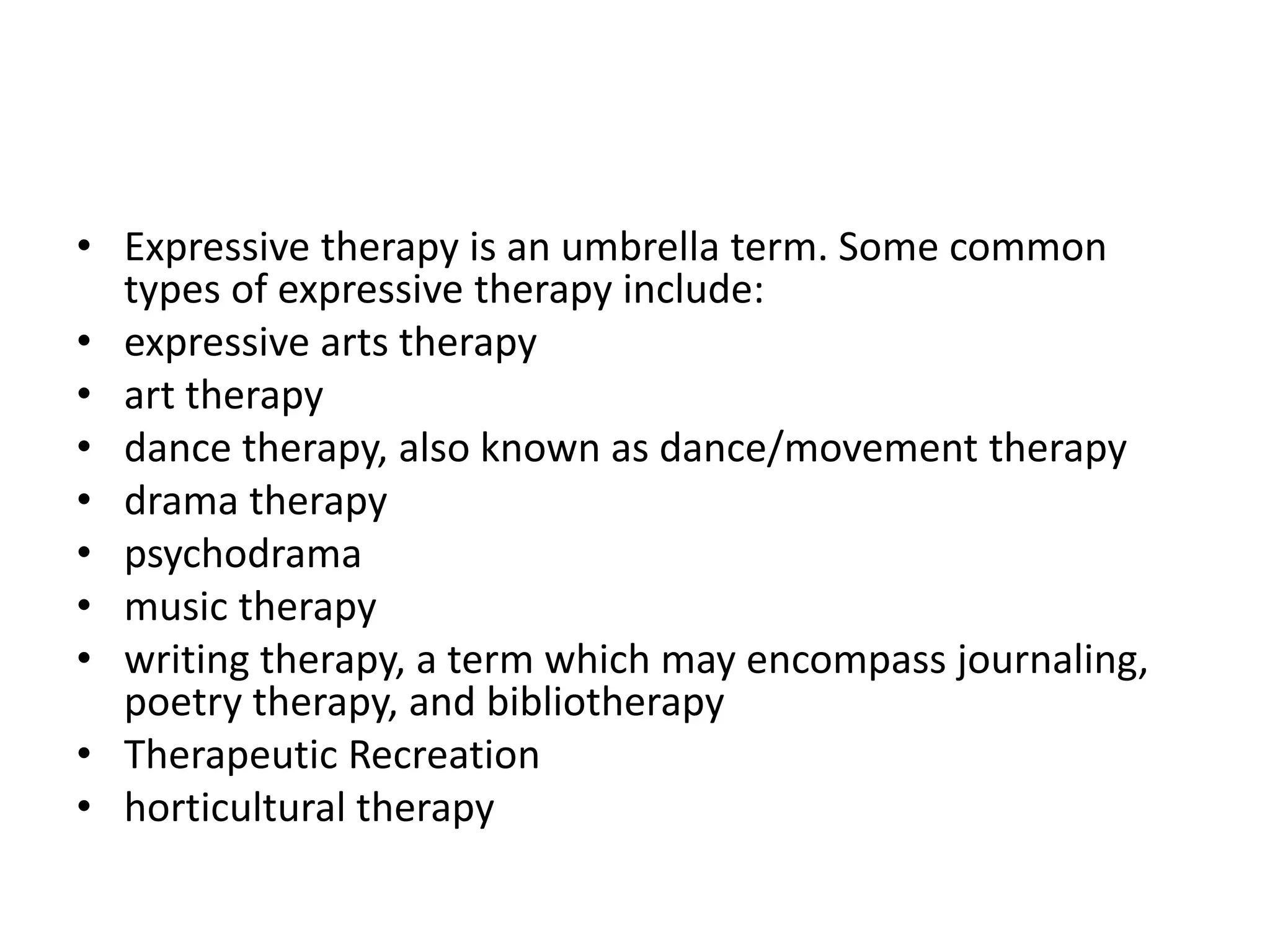Expressive therapy uses creative arts like art, music, dance, drama, and poetry as a form of therapy. The process of creation is emphasized over the final product. It allows clients to express themselves through non-verbal means which can provide unexpected insight. Different types of expressive therapy may help clients, especially children, process traumatic memories and abstract concepts in a concrete way. Therapists should be careful not to over-interpret clients' creative works and need proper training to ethically integrate expressive techniques.




















